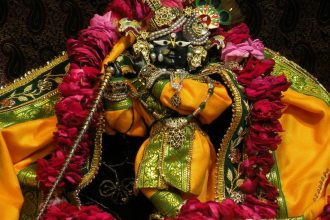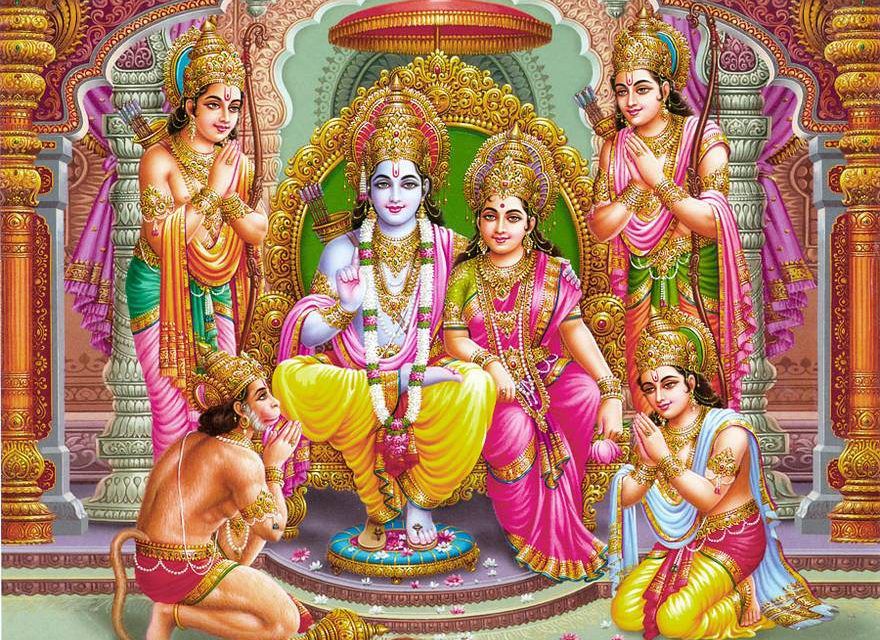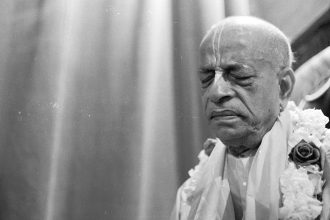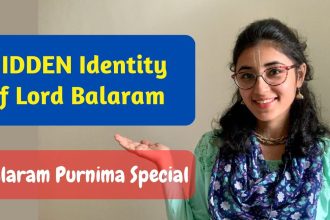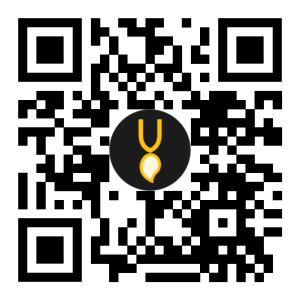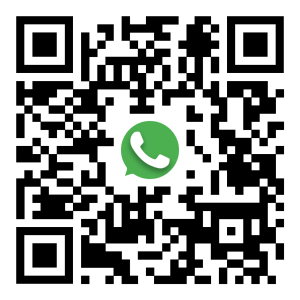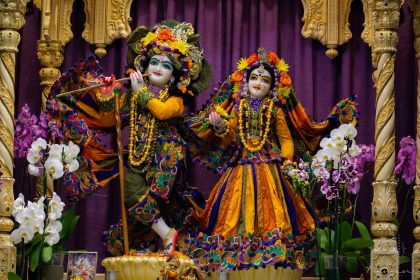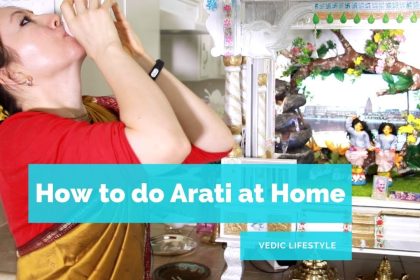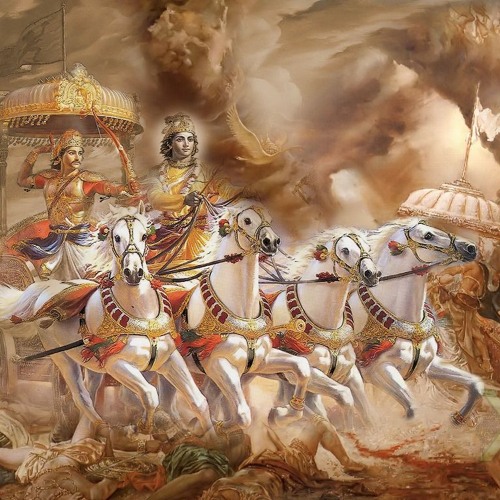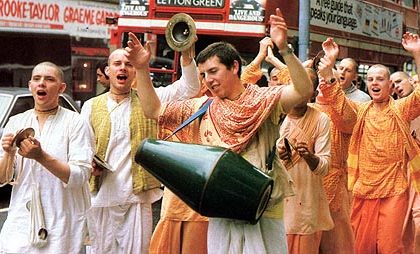By Satyaraja Dasa
Is Krsna consciousness polytheistic?
A discussion of Pañcopāsanā provides a clear answer that also helps us understand all religions.
At first blush, Vaisavism may seem polytheistic, given the various gods associated with the Vedic pantheon. But if we look slightly beneath the surface, we see there is more to this so-called polytheism than meets the eye.
The concept of monotheism–that there is only one God–tends to be associated with the Abrahamic religions (Judaism, Christianity, and Islam), but it is found elsewhere as well. So the first point to be acknowledged is that monotheism is more pervasive than is commonly understood.
Also, due to monotheism’s association with biblical religion, it is often seen as necessarily opposed to pantheistic and polytheistic points of view. But all is not so simple. In fact, monotheism overlaps with Indic monism–the idea that everything is, in some sense, God. And standard monotheistic religions too sometimes include a plurality of “gods.” For example, certain Christian groups see God as the Trinity, or three eternal persons–the Father, the Son, and the Holy Spirit. In this way both pantheism and polytheism sometimes interpenetrate monotheism, and vice versa.
Indeed, the following Vedic aphorism is sometimes recommended as a meditation for all who wish to understand such higher realities: “Truth is one, though the wise refer to it in various ways.” (Rg Veda 1.164.46)
This verse, found in one of the world’s oldest religious scriptures, hints at the mystery and diversity of Krsna consciousness. Since its focus is “the one and the many,” it overlaps with ideas of monotheism and polytheism, and it should be explored in terms of our present discussion. Just prior to this verse, one may note, the g Veda praises an exotic pantheon of gods, and only then are we told that God, or Truth, is ultimately one, though known variously. What does this mean? It points to a monotheistic idea of Deity, surely, but to what else? And how does it relate to the Vaisnava tradition, with its many gods and goddesses?
People know that adherents of Indian religions believe in many divinities–Brahma, Vishnu, Siva, the Goddess, and so on–and because of this the overall tradition is commonly understood to be polytheistic. Yet it simultaneously acknowledges the existence of one supreme God, known as Bhagavan (All-Opulent One), Paramatma (Supreme Self), Paramesvara (Supreme Controller), and so on. The philosophy of Krsna consciousness agrees that God is one, but adds that He is many as well. God reveals Himself in innumerable forms and shapes and further expands into lesser divinities, and even into the entire perceivable world.
This hierarchical series of divine manifestations, of spiritual separateness as opposed to oneness, is often neglected in Western scholarship (and even within modern-day Hinduism), where it is generally taught that these manifestations are all the same and somehow coalesce in a higher reality.
When people born in the West are confronted with Krsna consciousness, or even Hinduism in general with its many “gods,” their minds generally resort to preconceived notions of polytheism in non-Abrahamic cultures worldwide. The idea of one Supreme Godhead appears very far away, and reconciliation seems impossible. What most people don’t know is that the various religious traditions of the world can be categorized within the divisions of Pañcopāsanā, or the worship of five types of gods: Durga, Surya, Ganesha, Siva, and Vishnu. These five represent all the rest, and there are millions. It is this hierarchical categorization that we will explore in the remainder of this essay.
Five Primary Gods
The five primary gods of Pañcopāsanā and their numerous variations may be seen in three ways. First, they are alternate faces of one absolute reality who assist in the administration of the universe. Second, in this service they are separate beings performing cosmic functions. Third, they also represent categories of religious practice that indicate specific levels of spiritual understanding, as mentioned above.
This third, lesser-known perspective was the insight of Srila Bhaktivinoda Thakura (1838–1914),1 the great nineteenth-century Vaisnava reformer. His view of Indic polytheism and how it interrelates with the standard monotheistic traditions with which we are more familiar is enlightening.
According to Srila Bhaktivinoda, the initial quest for spirit, or Brahman, is a form of sakta-dharma (worship of sakti, or energy), for it recognizes nature as divine. For the sakta, “There is more to what we see than meets the eye.” Mother Nature is alive and fundamentally spiritual. In its most basic form, sakta-dharma consists of worshiping prakti, or material nature, but it can develop to the more sophisticated forms of Durga worship existing in India from time immemorial. Nonetheless, it is still a rudimentary form of spiritual awareness, with practitioners often still given to meat-eating and other low-grade materialistic activities. It is a beginning, a dawning of spiritual awareness.
Srila Bhaktivinoda writes, “The practices of saktism are fit to give rise to the first transcendental aspirations of man. People engrossed in sensual development and apathetic towards seeking the Absolute Truth may be enticed by the practices and way of life of a sakta, and in this way may be drawn closer to the highest object of life.”
When one’s spiritual inclinations mature, one understands that there is heat at the center of all we see, feel, taste, touch, and smell. The sun (Surya) gives us life, nurturing us with warmth and light. Our digestion is a kind of fire that ignites our bodies with gusto, allowing us to move about in the world. This is saura-dharma. According to Bhaktivinoda Thakura, “When God consciousness grows stronger, the realization that heat is the preeminent power effecting all activities in the material world comes, and one rises to the second stage: the worship of the source of all heat, the sun (Suryadeva).”
After this one realizes that even this magnificent energy, great though it may be, is still just a mundane force, generated from and subsisting in the material world. Bhaktivinoda Thakura calls this higher realization gaapatya-dharma, wherein one realizes that living beings hold the secret to higher spiritual reality. At this stage, an awareness evolves that animated living entities are more important than energetic abstractions, and gods such as Ganesha and other creatures of nature rise to prominence as the object of one’s worship. Such realization often manifests itself as the first seeds of humanism.
But this evolves further, and one realizes that all creatures reach their pinnacle in man. As Srila Bhaktivinoda writes, “The fourth stage is the worship of purely human consciousness in the form of Siva–saiva-dharma.” Here one looks for an empowered personality, a more humanlike divinity with whom one can identify. The idea of becoming one with this divine embodiment becomes desirable, and spirituality here consists of “unitary recognition”–seeing one’s identity with all that is and with the Supreme. In this way saiva-dharma puts forward a nontheistic spirituality, often focusing on monism, or even enhanced humanism, if with definite spiritual underpinnings. Thus the saiva-dharma level of spirituality affords one a glimpse into the actual nature of the divine.
But there is a higher reality still. Srila Bhaktivinoda reveals the culmination of the spiritual quest: “Coming to the fifth stage, an individual particle of consciousness–jiva (the soul)–serves the Personality of Supreme Consciousness. This stage is called Vaisnava-dharma, or Vaisavism.”
He further informs us that all of the world’s major religions fall into one of these five categories, and that this is what Pañcopāsanā, or the worship of various “Hindu gods,” is really all about.
Examples Around the World
Pantheism, Shamanism, Neopaganism, Gaianism, Shintoism, Goddess worship, Earth religion, and most folk religions are in the category of sakta-dharma, as such traditions essentially recognize the divine in nature.
Solar religion, or various manifestations of saura-dharma, was popular in many ancient cultures, from India to Egypt, and still is. The earliest deities associated with the sun are Surya, Wadjet, Sekhmet, Hathor, Bast, Bat, and Menhit. The Aztecs of Mexico, as well as certain tribes of Africa, made sun worship famous.
Ganesha worship is an in-between stage, not as basic as sakta-dharma and saura-dharma, but not yet theism proper. This level of realization can be found throughout the world as well, often in the form of humanism, wherein a spark of divinity is detected in one’s fellow man. It is the seed of divine awareness and reaches its most mature form, Bhaktivinoda Thakura writes, in religions like Buddhism and Jainism, for they are akin to saiva-dharma, with a greater emphasis on psychological empowerment and fully awakened humanism, along with a type of philosophical monism. Judaism, Christianity, and Islam, he further explains, are similar to Vaisavism, since worship of the Supreme Godhead is the focus of these traditions.
Yet Srila Bhaktivinoda is quick to point out that there is a “mundane” Vaisavism and a “spiritual” Vaisavism as well. The first is called bharavahi (“those who carry the burden of external rituals”), and the second is called saragrahi (“those who drink the essence”). It is this latter form of Vaisavism, naturally, that is lauded as the culmination of the religious quest. The former is merely a variety of Hinduism, on a par with other sectarian religions. Saragrahi Vaisavism is the eternal function of the soul and the science of spirituality, and it is this that the great spiritual masters throughout history have encouraged devotees to embrace.
Reaching Maturity in Krsna
Srila Bhaktivinoda Thakura sums up Pañcopāsanā:
Therefore, those who are simply astonished by the powers of anything in the creation of the Lord, without any factual information of the Lord Himself, are known as saktas, or worshipers of the great powers. The modern scientist is also captivated by the wonderful actions and reactions of natural phenomena and therefore is also a type of sakta. These lower-grade persons gradually rise to become sauriyas (worshipers of the sun-god) or gaapatyas (worshipers of the mass of people as janata janardana or daridra-Narayana and so on, in the form of Gaapati) and then rise to the platform of worshiping Lord Siva in search of the ever-existing soul and its identity with the Lord. After this one may graduate to the stage of worshiping Lord Vishnu, the Supersoul, whose highest form is that of Lord Krsna.
To highlight Krsna’s supremacy and indicate the secondary status of the demigods, Lord Brahma, who creates the material cosmos on behalf of Lord Vishnu, composed the treatise known as the Brahma-saṁhitā. The Gaudiya Vaisnava acarya Bhaktisiddhanta Sarasvati Thakura, the son of Bhaktivinoda Thakura, writes in his commentary on this great work:
The Brahma-saṁhitā has refuted Pañcopāsanā. . . . The worship of Vishnu as found in Pañcopāsanā does not please Vishnu; it is heterodox and highly improper. . . . The worship of Vishnu as one of the five deities makes His highest dignity, which is without any equal, similar to that of the other deities, and [in that system] His Lordship is counted as one of several deities, which is a great spiritual offense. . . . It is the eternal duty of all jivas to serve Krsna, the Lord of all lords. All other deities are His servitors. Their function is only to carry out His commands. They will never acquire liberation who conceive of the deities as the different names and bodies of Vishnu instead of knowing them as His servitors. Thus five slokas [verses] of the Brahma-saṁhitā have described the natures of the five deities. . . .:
(1) “I (i.e., Brahma) adore the primeval Lord Govinda [Krsna], in pursuance of whose order the sun-god [Surya], the king of the planets and the eye of this world, performs his journey, mounting the wheel of time.
(2) I adore the primeval Lord Govinda, whose lotuslike feet are always held by Ganesha on his head in order to obtain power for his function of destroying all the obstacles of the three worlds.
(3) I adore the primeval Lord Govinda, in accordance with whose will Durga, His external potency, conducts her function as the creating, preserving, and destroying agent of the world.
(4) I adore the primeval Lord Govinda, who transforms Himself as Shambhu [Siva] for performing the work of destruction, just as milk is transformed into curd, which is neither the same as, nor different from, milk.
(5) I adore the primeval Lord Govinda, who manifests Himself as Vishnu in the same manner as one burning candle communicates its light to another candle which, though existing separately, is of the same quality as the first.”2
The many gods associated with Krsna consciousness are individual living beings in their own right. They are cosmic administrators, and they have an accessible, down-to-earth function as representatives of universal religious categories. Through Bhaktivinoda Thakura’s lens, they offer a hierarchical understanding of how one gradually evolves in consciousness from the dawn of spiritual awakening to the perfection of spiritual life.
NOTES
- All quotations from Srila Bhaktivinoda Thakura in this article are from the essay “Sri Bhagavata Dharma Vichar.” The ideas first appeared in his book Sri Krishna-samhita (Calcutta: Isvarchandra Basu, 1879), pp. 7–8.
- Srila Bhaktisiddhanta Sarasvati here quotes his own commentary on the Brahma-saṁhitā while replying to questions by Pandit Shyamasundar Chakravarty, a leader in India’s independence movement. The exchange was published in The Harmonist.
Satyaraja Dasa, a disciple of Srila Prabhupada, is a BTG associate editor and founding editor of the Journal of Vaishnava Studies. He has written more than thirty books on Krsna consciousness and lives near New York City.


